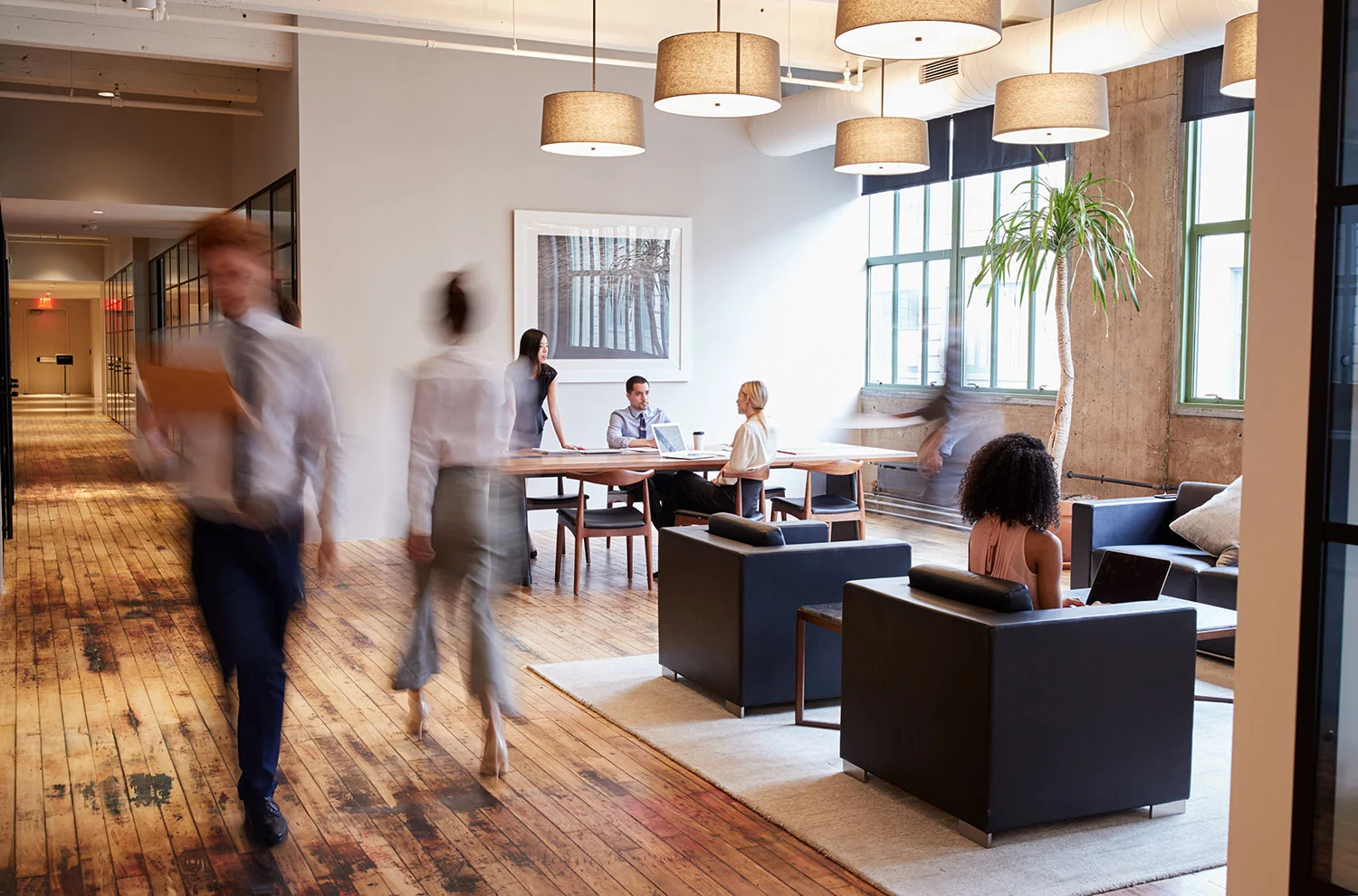Tips on Adapting to Fluid Office Environments
Your workplace is one of the most important tools your company has. As we progress further into the 21st century, a new trend in office working environments has emerged, moving away from traditional assigned seating and allowing employees to choose where they do their work based on tasks and their own preferred working styles. Not only does this trend appeal to younger workforces like millennials, but it opens up opportunities in employee recruitment and retention by increasing morale and enhancing productivity. According to this report from Steelcase, 88% of highly engaged employees feel like they have greater flexibility in how and where they work. As companies shift towards this new style of working culture, it becomes increasingly more important to adapt work spaces to be more agile and activity-based.
Adapting to a fluid office environment is easier than one would think, but does come with its own set of challenges in terms of how your office space should be designed. The key to a successful shift to a more agile working style is establishing an environment that not only enables people to optimally perform, while making work a positive and rewarding experience. By eliminating barriers that distract them from what they need to do and adding elements that promote better and more meaningful communication, you’ll create a space that people want to be in.
Thinking about making the change? Here’s some tips on how to find success when adapting to a fluid office environment:
Establish clear workplace protocols
When liberating work spaces from traditional working environments, a very important first step is to establish workplace protocols, especially in areas that are dedicated to focused work. Will your spaces be available on a first-come-first-serve basis or can they be reserved? Are common work areas to be cleared off by the end of each day? Will there be certain spaces that are dedicated as silent zones? Doing so will prevent confusion and frustration between your team members when it comes to sharing space and keep your workplace harmonious and humming along.Make sure your tech is as agile as your office
Work happens in all parts of the office, from primary work areas to meeting and break areas. Simple things, such as providing an abundance of outlets and convenient access to a monitor/tv, projector, or interactive whiteboard, encourages fluid motion throughout the office and impromptu creativity opportunities during discussions.Offer choices of workspace
Different people have different working styles and there is ever a one-size-fits-all solution. Even the most nomadic and transitory of team members sometimes still like to have a place that they can call home base upon starting their work day. Providing your employees with plenty of choices on how and where they can work will not only allow them to adapt their local working environment to their preferred working style, but will increase their engagement and productivity levels.
As modern offices shift towards a more fluid working environment, it becomes critical that it is done in a way that not only enables people to optimally perform, but makes it positive and rewarding at the same time in order to achieve long-term success. By establishing a work culture that people want to be a part of, you’ll find that not only have you provided your team with the right tools and technology to help them do and be their best, but that your company will be able to achieve even higher levels of success.
Interested in learning more about how you can change up your office? Read more about it in our blogs:
Part 1: 4 Considerations in Office Design That Will Outlast Any Trend
Part 2 (Work-life Integration): 4 Considerations in Office Design That Will Outlast Any Trend
Part 3 (Integrated Technology): 4 Considerations in Office Design That Will Outlast Any Trend
Part 4 (Workplace Wellness): 4 Considerations in Office Design That Will Outlast Any Trend


